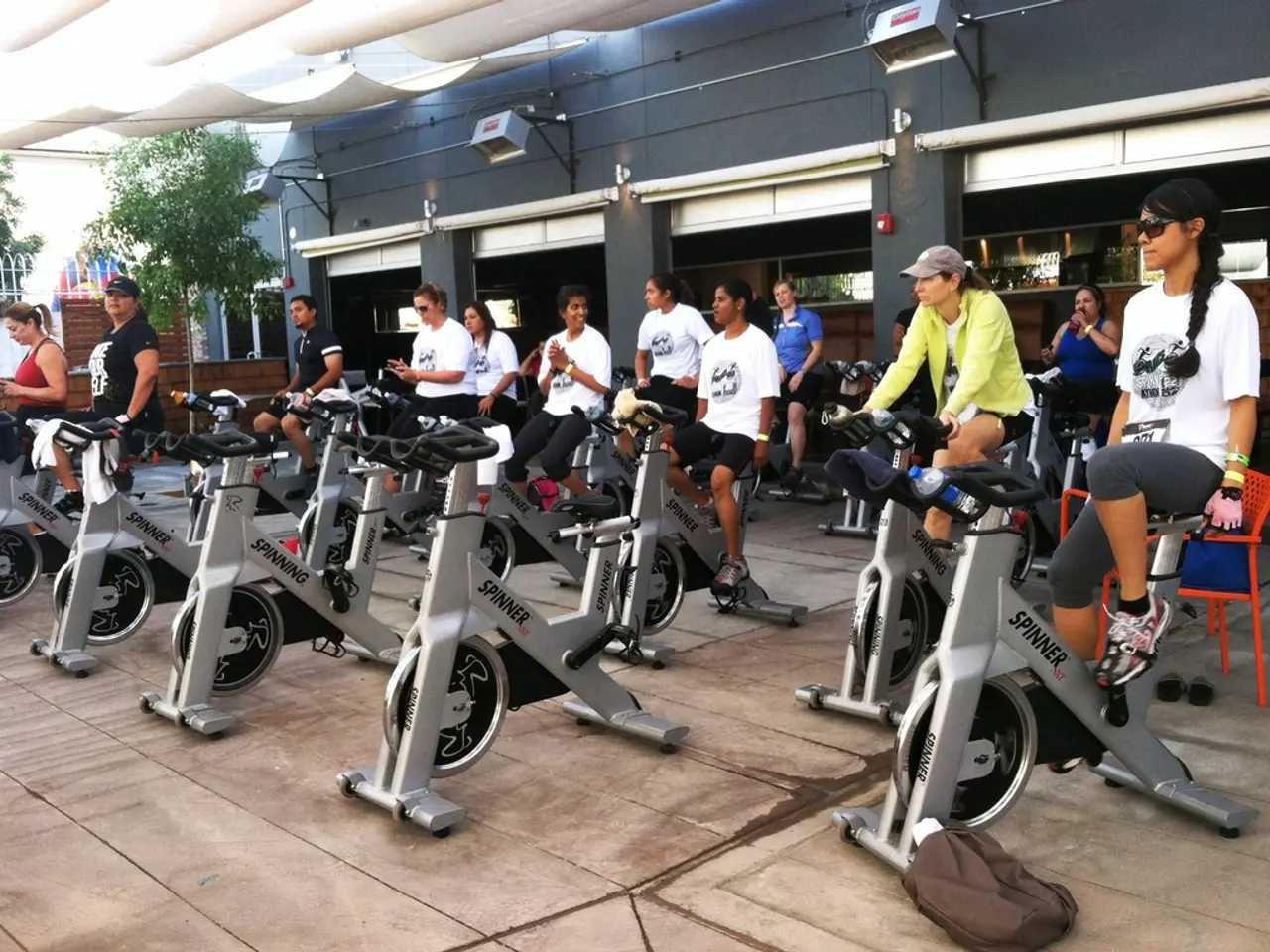Differences in Caloric Expenditure During Physical Activity Among Individuals
In the quest to maintain a healthy weight and improve fitness levels, understanding calorie burn is essential. Here's a breakdown of the key factors that influence calorie burn, based on recent research.
A balanced diet plays a crucial role in supporting calorie burn. Protein, which is essential for muscle repair, can boost metabolism and aid in muscle growth. Carbohydrates provide the energy required for intense workouts, while fats contribute to long-lasting endurance.
Staying hydrated is equally important, as it ensures efficient fat and carbohydrate burning during exercise.
As we age, our metabolism naturally slows down due to decreased muscle mass and changes in hormone levels. However, maintaining an active lifestyle can help mitigate these effects. Exercise can counteract age-related changes to calorie burn, making it a vital component of a healthy aging strategy.
Environmental factors also influence calorie burn. Exercising in colder temperatures may increase calorie burn because the body needs to expend energy to keep warm, potentially burning more fat.
Fitness level is another significant factor. More experienced exercisers may burn fewer calories during the same activity due to their body's improved efficiency, but they can push themselves harder, leading to greater overall calorie burn.
Genetic factors play a significant role in determining how many calories are burned during exercise. Some genetic variations are linked to better endurance and increased calorie expenditure during long-duration activities, while others may cause people to burn fat more efficiently.
Muscle mass is important for determining how many calories are burned, as muscle tissue requires more energy to maintain than fat. Increasing muscle mass through strength training can significantly boost calorie-burning potential.
Hormonal factors, such as testosterone and estrogen, influence fat storage and muscle mass, which in turn affect calorie burn rates. Men generally have a higher percentage of muscle mass compared to women, leading to higher calorie burn. However, women can still optimize calorie burn through strength training and other exercises that increase muscle mass.
Rest and recovery are essential for efficient calorie burning. Proper recovery, including rest days, is crucial for muscle repair and the "afterburn" effect (EPOC), which leads to continued calorie burning post-exercise.
High-intensity interval training (HIIT) and resistance training are effective ways to increase the intensity of workouts, leading to higher energy expenditure during and after exercise.
By understanding the complex interplay of factors affecting calorie burn, individuals can tailor their workouts to optimize calorie expenditure and achieve their fitness and weight loss goals. Fitness experts like Herman Pontzer, an evolutionary anthropologist known for research on energy expenditure and factors influencing calorie burn during activity, have authored work explaining the science behind these factors.
In conclusion, a balanced diet, regular exercise, and understanding the role of genetic, hormonal, and environmental factors can help individuals effectively manage their calorie burn and achieve their fitness goals.
Read also:
- Understanding Hemorrhagic Gastroenteritis: Key Facts
- Stopping Osteoporosis Treatment: Timeline Considerations
- Tobacco industry's suggested changes on a legislative modification are disregarded by health journalists
- Expanded Community Health Involvement by CK Birla Hospitals, Jaipur, Maintained Through Consistent Outreach Programs Across Rajasthan








